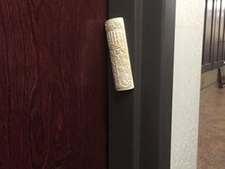*New Legislation

On January 1, 2012, Section 1360.2 (now Section 4740) was added to the California Civil Code to limit a HOA’s authority to adopt and enforce certain rental “prohibitions.” The legislative intent behind the law was the recognition that “the rights of Owners in [a HOA] to rent or lease their properties, as the rights existed at the time the Owners acquired them, should be protected by the State of California…” Nevertheless, by its own terms, Section 4740 applies to rental prohibitions, not necessarily less serious restrictions that are reasonably related to the Association’s interests in maintaining and preserving the community. Thus, many HOAs adopted restrictions regulating the rental of separate interests within the development (e.g., one-year minimum term limit, owner-occupancy requirements, individual room rental restrictions, etc.).
On September 28, 2020, Governor Gavin Newsom signed Assembly Bill 3182 (“AB 3182”), which was introduced as another measure “to address the housing and homelessness crisis” in California. According to Assembly Member Phil Ting (the author of AB 3182), “[t]here are millions of homes across the state that have the potential to be rented to Californians in need of housing but that are prohibited from being leased under outdated [HOA] rules.” While the stated objective of providing more affordable housing units is a laudable goal, AB 3182 significantly limits the extent to which HOAs may impose rental restrictions and prohibitions.
Under AB 3182, California Civil Code section 4741 is added to the Davis-Stirling Common Interest Development Act and renders void and unenforceable any provision in a governing document or amendment thereto “that prohibits, has the effect of prohibiting, or unreasonably restricts the rental or leasing of” a separate interest “to a renter, lessee, or tenant.” Despite this prohibition, Section 4741 does authorize a HOA to adopt and enforce:
- A rental cap of twenty-five percent (25%) of the separate interests (or greater); and
- A provision “that prohibits transient or short-term rental of a separate…interest for a period of 30 days or less.”
Moreover, Section 4741 adds that a separate interest (including Accessory Dwelling Units and Junior Accessory Dwelling Units) is not considered “occupied by a renter” if the separate interest is also owner-occupied. Thus, for example, a cap on the number of rentals within a HOA would not apply to an owner renting out individual rooms within his or her separate interest.
Other than the rental restrictions specifically identified in Section 4741, there is much uncertainty as to the extent to which other common rental restrictions would be rendered unenforceable as a result of AB 3182. Indeed, the Legislature provides no guidance as to what would constitute an “unreasonable restriction” on the rental of a separate interest. Therefore, each rental restriction contained in a HOA’s governing documents must be evaluated in light of AB 3182’s intent: to increase the number of housing units made available.
| There is much uncertainty that remains concerning the extent to which other typical rental restrictions remain valid and enforceable. To the extent certain rental restrictions are rendered unenforceable by AB 3182, same must be removed from the governing documents no later than December 31, 2021. Failure to comply with Section 4741 may result in a HOA being liable for actual damages (e.g., lost rental income) and a civil penalty of up to one thousand dollars ($1,000). It is therefore important for each HOA to consult with their attorney to determine whether the HOA’s rental restrictions are enforceable in light of AB 3182, and to take action to amend their governing documents to remove such unenforceable provisions. |
-Blog post authored by TLG Attorney, Matthew T. Plaxton, Esq.
 HOA Lawyer Blog
HOA Lawyer Blog


 *Asked & Answered
*Asked & Answered Community associations across the state are wrestling with the idea of opening common area facilities after closure due to COVID-19. Residents are becoming increasingly restless under the state’s
Community associations across the state are wrestling with the idea of opening common area facilities after closure due to COVID-19. Residents are becoming increasingly restless under the state’s  *Asked & Answered
*Asked & Answered *Unpublished Opinion
*Unpublished Opinion *New Legislation
*New Legislation *Unpublished Opinion
*Unpublished Opinion In
In  California is currently facing a serious shortage of affordable housing. The housing crunch is impacting individuals and businesses in all parts of the state. Businesses are having trouble attracting and retaining employees and individuals face longer commute times and overcrowding, among a host of other issues.
California is currently facing a serious shortage of affordable housing. The housing crunch is impacting individuals and businesses in all parts of the state. Businesses are having trouble attracting and retaining employees and individuals face longer commute times and overcrowding, among a host of other issues. On July 31, 2017, Governor Brown signed Assembly Bill 1139 (“AB 1139”) into law.
On July 31, 2017, Governor Brown signed Assembly Bill 1139 (“AB 1139”) into law.